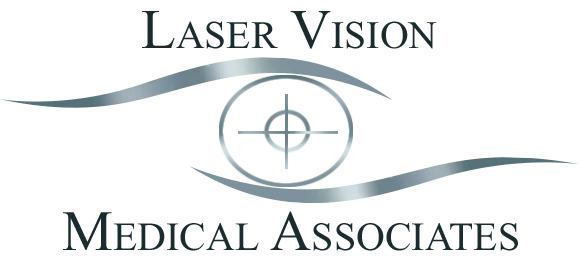FROM CNBC and AP
Updated: 6:16 p.m. ET Dec. 11, 2005
CHICAGO - Christopher Tomes, 43, opened his eyes one morning, looked out the window and could read the license plate of a parked car — without his glasses. He’d had Lasik eye surgery the day before, becoming one of the 5 million Americans seeking to shed their eyeglasses with laser vision correction during the past decade. “It’s exceptional,” Tomes said of his vision nine days after surgery. “I’m extremely happy I did it.” Since U.S. doctors began offering laser vision correction in 1995, safety has improved and new methods give people with more severe vision problems a chance to have the procedure. But there’s still no guarantee of 20/20 eyesight, the procedure’s long-term safety is unknown and one recent study showed nearly 18 percent of patients require a second Lasik treatment. A lack of health insurance coverage keeps the procedure a luxury item, affordable only to people who can spare $3,000 to $5,000. In addition, a technology arms race means some vision clinics are bragging about their new equipment and techniques, such as wavefront-guided Lasik and a new “blade-free” method. That further complicates a consumer’s decision. “You listen to the radio, you hear the ads,” said Chicago refractive surgeon Dr. Colman Kraff. “A lot of it is trying to market to the patient to scare them a little bit into having one procedure over another.” The average Lasik patient is about 39 years old with an income of about $88,000, said Dave Harmon, president of Market Scope, a company that tracks the industry. “Their education level is significantly higher than average,” Harmon said. “ Very few people in their 20s have it done. Very few people in their 50s have it done.”
Patients choose their doctors by word of mouth, Harmon said.
Friends’ endorsements led Tomes, the Chicago Lasik patient, to Kraff’s downtown clinic. Tomes, who heads a company that creates animated advertising for the Web, had grown tired of misplacing his glasses. “Glasses are easy to leave on an airplane,” he said. “I was losing, on average, three or four pairs of glasses a year, and that got expensive.” Tomes met with Kraff and learned he was a good candidate for Lasik. He chose all the new technology Kraff had to offer: both the “wavefront” method, which creates a custom map of the corneas, and the “blade-free” procedure. Conventional Lasik surgery is based on the patient’s glasses prescription. Wavefront-guided Lasik bounces light waves off the back of the eye to create a 3-D map that’s used to guide the laser treatment. One small study of 25 patients suggested that wavefront Lasik yielded fewer nighttime distortions, such as halos and glare, than conventional Lasik, and resulted in better vision for slightly more patients.
'Blade-free' technique
Tomes didn’t have severe nearsightedness or an astigmatism, but wavefront-guided Lasik recently was approved by the Food and Drug Administration for both those conditions, expanding the number of people eligible for the surgery by about 1 million. It’s also been approved for farsightedness. Tomes also chose to go “blade-free,” that is, the doctor used a new laser technique, instead of a disposable blade, to create a flap in the cornea. All Lasik surgeries include making this thin, hinged flap, a layer that is folded back into place after the laser treatment to speed healing. In the blade-free procedure, the surgeon uses a brand-name laser, called the IntraLase, to create thousands of tiny bubbles under the surface of the cornea. The bubbles allow the surgeon to peel a flap from the cornea with a small blunt tool, called a spatula. The blade-free procedure takes a few minutes longer compared to the usual method, is more expensive and is not necessarily superior for every patient, Kraff said. Although the only studies comparing the two techniques are small or funded by industry, results in vision correction appear similar. Some doctors have reported more redness of the eyes with the bladeless technique, possibly due to the longer time the patient’s eye is held still by suction.
Related stories - Luxury checkups for the wealthy (Newsweek: New surgical options can perfect vision)
But the word “blade-free” makes patients more comfortable psychologically, Minneapolis refractive surgeon Dr. Elizabeth Davis said. “They have the heebie-jeebies about a blade going across the eye,” she said. Even with “blade-free” in his plans, Tomes felt a moment of anxiety before his operation. That was when he read and signed forms listing all Lasik’s risks. “It was quite daunting: a list of many, many complications,” he said. “One in particular jumped out at me. It was the potential, but rare, that the machine in the middle of the procedure could malfunction with a quarter of the eye still to be done. And it would be difficult to fix that.” Other rare but scary possibilities include sight-threatening infection, eyesight that’s worse than before and a scratched cornea. According to Dr. Douglas Koch, ophthalmology professor at Baylor College of Medicine, there are rare reports of legal blindness “perhaps no more than less than 10 cases out of over 10 to 15 million procedures performed.” Tomes decided to go ahead, despite his last-minute worries, and is glad he did. Talk to a Lasik doctor, and you’re bound to hear the phrase “realistic expectations.” Doctors have discovered that avoiding disgruntled patients means spelling out the procedure’s shortfalls upfront: A 35-year-old who has Lasik may still need reading glasses at age 50. Some people, after Lasik, see halos around lights. Some find their eyes feel dry for months, or permanently.
“Anybody who guarantees you a 20/20 result, you should get up and walk out,”- Kraff said.
